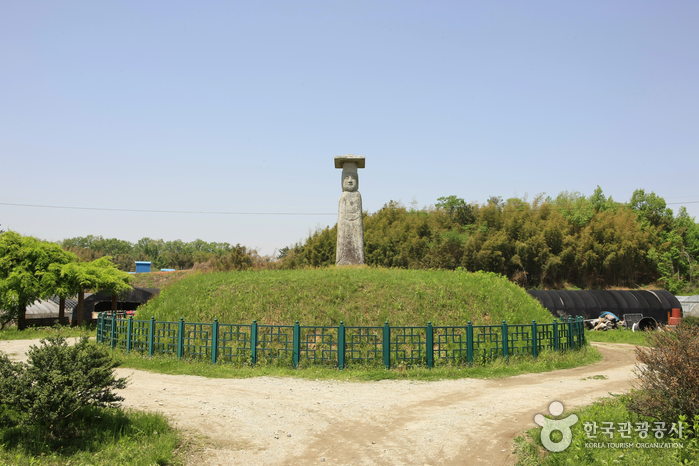Temple Munsusa (Gimje) (문수사(김제)
19.3Km 2024-04-07
158, Hwangsan 5-gil, Gimje-si, Région Jeonbuk
+82-63-547-0972
Le temple Munsusa, situé à Hwangsan-dong, Gimje-si, est une branche du temple Geumsansa. Le temple se trouve dans le magnifique cadre naturel du mont Bonghwangsan, au coeur de l’immensité des plaines Mangyeong. Le mont Bonghwangsan se trouve à seulement 100 m au-dessus du niveau de la mer, et il est entouré par la plaine. Le temple, qui se trouve au sommet de la montagne, offre donc un panorama bien dégagé.
Le temple Munsusa a été fondé par le grand moine Hyedeok Seonsa (dans la 25ème année du règne du roi Mu de Baekje) après avoir vu le saint bouddhiste Munsu Bosal en rêve. Au moment de sa création, le temple s’appelait Munsu, car le site où il a été établi s’appelait « Munsugol ». Devant le temple se trouve un arbre zelkova aussi ancien qu’imposant, dont la circonférence dépasse les 5 m. Cet arbre, appelé « Gwimok (ce qui signifie « arbre sacré et miraculeux »), a récemment été désigné « arbre préservé », pour lui garantir une protection spéciale. Tous les 14 janvier du calendrier lunaire, les autorités locales de Gimje organisent un rituel sacré pour l’arbre, et le temple possède son propre rituel pour l’esprit de la montagne.
Statue de Bouddha debout de Godori à Iksan (익산 고도리 석조여래입상)
19.5Km 2024-04-07
400-2, Donggodo-ri, Geumma-myeon, Iksan-si, Région Jeonbuk
+82-63-859-5792
La statue de Bouddha debout de Godori à Iksan est le trésor n°46 de Corée. Les deux statues de Bouddha (mesurant toutes deux 424cm) se font face à une distance de 200m l’une de l’autre et montrent l’histoire d’un amour éternel mais unilatéral. Selon la légende, les deux bouddhas (un mâle, une femelle) sont amoureux mais ne peuvent se rencontrer qu’une seule nuit par an, lors du 12ème mois du calendrier lunaire. Après le coucher du soleil en ce jour spécial, la rencontre des amoureux est permise mais ces derniers doivent retourner à leur position initiale avant le chant du coq au petit matin.
Les deux statues sont très représentatives de l’ère Goryeo, qui a produit en son temps de nombreuses statues contenant très peu d’expressions corporelles. Parfaitement fidèle au style de l’époque, chaque Bouddha, qui n’a presque aucune forme, est représenté avec des habits simples et des bras à peine visibles. Sur leur tête, les bouddhas portent une couronne aggrémentée d’un deuxième chapeau de forme carrée. Avec leur visage carré, leur petits yeux, leur nez plat et petites lèvres, les bouddhas sont évocateurs des gardiens de dieu placés aux entrées des villages.


 Français
Français
 한국어
한국어 English
English 日本語
日本語 中文(简体)
中文(简体) Deutsch
Deutsch Español
Español Русский
Русский